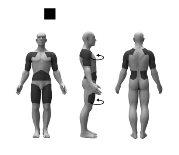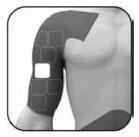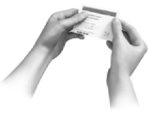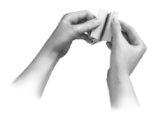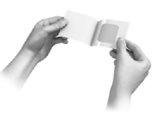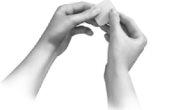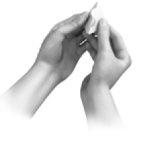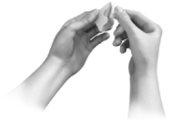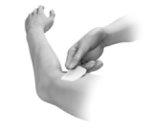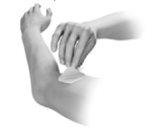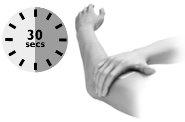
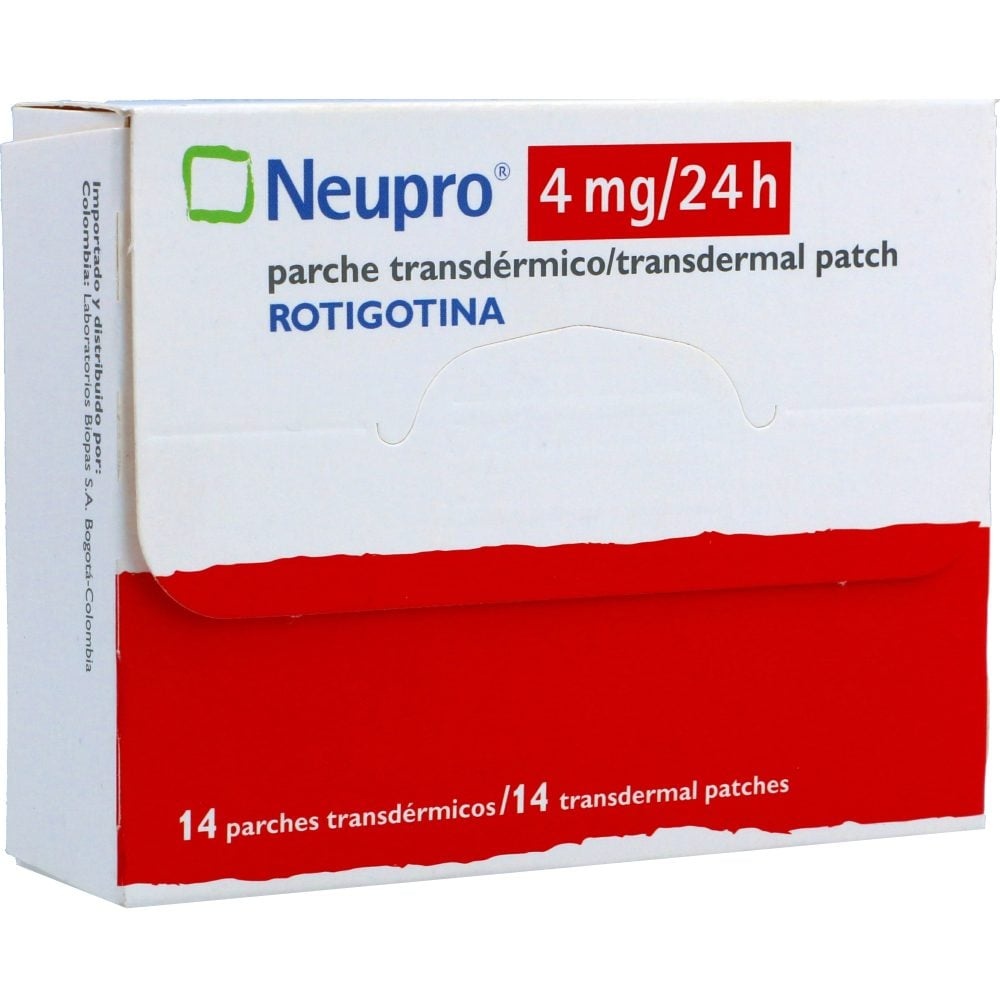
NEUPRO 4 mg/24h TRANSDERMAL PATCH

Ask a doctor about a prescription for NEUPRO 4 mg/24h TRANSDERMAL PATCH

How to use NEUPRO 4 mg/24h TRANSDERMAL PATCH
Introduction
Package Leaflet: Information for the User
Neupro 4mg/24h Transdermal Patch
Neupro 6mg/24h Transdermal Patch
Neupro 8mg/24h Transdermal Patch
Rotigotine
Read all of this leaflet carefully before you start using this medicine because it contains important information for you.
- Keep this leaflet, you may need to read it again.
- If you have any further questions, ask your doctor, pharmacist, or nurse.
- This medicine has been prescribed for you only. Do not pass it on to others. It may harm them, even if their signs of illness are the same as yours.
- If you get any side effects, talk to your doctor, pharmacist, or nurse. This includes any possible side effects not listed in this leaflet. See section 4.
Contents of thepackage leaflet:
- What is Neupro and what is it used for
- What you need to know before you start using Neupro
- How to use Neupro
- Possible side effects
- Storing Neupro
- Package contents and further information
1. What is Neupro and what is it used for
What is Neupro
Neupro contains the active substance rotigotine.
It belongs to a group of medicines known as “dopamine agonists”. Dopamine is an important messenger in the brain for movement.
What is Neupro used for
Neupro is used in adults to treat the signs and symptoms of:
- Parkinson's disease- Neupro can be used alone or with another medicine called levodopa.
2. What you need to know before you start using Neupro
Do not use Neupro if:
- you are allergicto rotigotineor any of the other ingredientsof this medicine (listed in section 6)
- you are going to have a magnetic resonance imaging(MRI) scan (diagnostic images of the inside of the body, created using magnetic energy instead of X-ray energy)
- you need a ‘cardioversion’ (specific treatment for heart rhythm disturbances).
You must remove the Neupro patch just before having a magnetic resonance imaging (MRI) scan or cardioversion to avoid skin burns because the patch contains aluminum. You can put on a new patch when these tests are finished.
Do not use Neupro if any of the above applies to you. If you are not sure, talk to your doctor, pharmacist, or nurse first.
Warnings and precautions
Talk to your doctor, pharmacist, or nurse before you start using Neupro, because:
- you should have your blood pressurechecked regularly while you are using Neupro, especially when you start treatment. Neupro may affect your blood pressure.
- you should have your eyesightchecked regularly while you are using Neupro. If you notice any problems with your eyesight between checks, you should tell your doctor immediately.
- you may have skin reactionscaused by the patch – see ‘Skin problems caused by the patch’ in section 4.
- you may feel very sleepy or fall asleep suddenly– see ‘Driving and using machines’ in section 2.
- you may have involuntary muscle contractions that cause abnormal movements or postures, often repetitive (dystonia), abnormal postures, or lateral flexion of the spine (also called pleurothotonus or Pisa syndrome). If this happens, your doctor may decide to adjust your medication.
If you experience these symptoms after you start using Neupro, contact your doctor.
Medicines used to treat Parkinson's disease should be reduced or stopped gradually. Tell your doctor if you experience symptoms such as depression, anxiety, fatigue, sweating, or pain after you stop or reduce your treatment with Neupro.
You may lose consciousness
Neupro may cause loss of consciousness. This can happen especially when you start using Neupro or when you increase the dose. Tell your doctor if you lose consciousness or feel dizzy.
Changes in behavior and abnormal thoughts
Neupro may cause side effects that change your behavior (the way you act). If your family or caregiver, or your doctor, are concerned about changes in your behavior, it may be helpful to tell a family member or caregiver that you are using this medicine and to read the package leaflet.
This includes:
- a strong desire to take large doses of Neupro or other medicines used to treat Parkinson's disease
- anxiety or a strong desire to behave in unusual ways that you cannot control and that may harm you or others
- abnormal thoughts or behaviors.
For more information, see ‘Changes in behavior and abnormal thoughts’ in section 4.
Children and adolescents
This medicine must notbe given to childrenunder 18 years because its safety and efficacy in this age group are not known.
Using Neupro with other medicines
Tell your doctor or pharmacist if you are using, have recently used, or might use any other medicines. This includes medicines without a prescription and herbal medicines.
If you are being treated with Neupro and levodopa at the same time, some side effects may get worse. This includes seeing or hearing things that are not real (hallucinations), uncontrolled movements related to Parkinson's disease (dyskinesia), swelling in the legs and feet.
Do not take the following medicines while you are using Neupro - they may reduce its effect:
- ‘antipsychotic’ medicines - used to treat certain mental illnesses
- metoclopramide - used to treat nausea and vomiting.
Talk to your doctor before using Neupro if you are taking:
- sedative medicines such as benzodiazepines or medicines used to treat mental disorders or depression
- medicines that lower blood pressure. Neupro may lower blood pressure when standing up - this effect may get worse when taking medicines to lower blood pressure.
Your doctor will tell you if it is safe to take these medicines while you are using Neupro.
Using Neupro with food, drinks, and alcohol
Since rotigotine enters the bloodstream through the skin, taking food or drinks does not affect how this medicine is absorbed. You should talk to your doctor if you can drink alcohol while you are using Neupro.
Pregnancy and breastfeeding
Do not use Neupro if you are pregnant. This is because the effects of rotigotine on pregnancy and the unborn child are not known.
Do not breastfeed while you are using Neupro. This is because rotigotine may pass into breast milk and affect your baby. It is also likely to reduce the amount of milk produced.
If you are pregnant or breastfeeding, think you may be pregnant, or are planning to have a baby, ask your doctor or pharmacist for advice before using this medicine.
Driving and using machines
Neupro may make you feel very sleepy or fall asleep suddenly. If this happens, do not drive. In rare cases, people have fallen asleep while driving, which has led to accidents.
Also, do not use tools or machines if you feel very sleepy - or perform any activity where you may put yourself or others at risk of serious injury.
Neupro contains sodium metabisulfite (E223)
Neupro contains sodium metabisulfite (E223), a substance that can rarely cause severe allergic reactions (hypersensitivity) and bronchospasm (difficulty breathing due to narrowing of the airways).
3. How to use Neupro
Follow the administration instructions for this medication exactly as indicated by your doctor or pharmacist. If in doubt, consult your doctor or pharmacist.
What patch dose to use
The dose of Neupro you need depends on your illness - see below.
Neupro is available in patches of different doses that release the medication over 24 hours. The doses are 2 mg/24 h, 4 mg/24 h, 6 mg/24 h, and 8 mg/24 h for the treatment of Parkinson's disease.
- You may need to use more than one patch to achieve the prescribed dose.
- For doses higher than 8 mg/24 h (doses prescribed by your doctor above the available doses), several patches should be used to achieve the final dose. For example, a daily dose of 10 mg can be achieved by using a 6 mg/24 h patch and a 4 mg/24 h patch.
- Patches cannot be cut into pieces.
Treatment of Parkinson's Disease
Patients not taking levodopa - early stages of Parkinson's disease
- Your starting dose will be a 2 mg/24 h patch per day.
- From the second week, the daily dose will be increased by 2 mg weekly - until the appropriate maintenance dose for you is reached.
- For most patients, the appropriate dose is between 6 mg and 8 mg per day. This is usually achieved between 3 and 4 weeks.
- The maximum dose is 8 mg per day.
Patients taking levodopa - advanced stages of Parkinson's disease
- Your starting dose will be a 4 mg/24 h patch per day.
- From the second week, the daily dose will be increased by 2 mg weekly - until the appropriate maintenance dose for you is reached.
- For most patients, the appropriate dose is between 8 mg and 16 mg per day. This is usually achieved between 3 and 7 weeks.
- The maximum dose is 16 mg per day.
If you need to stop taking this medication, see “If you stop treatment with Neupro” in section 3.
How to use Neupro patches
Neupro is a patch that is applied to the skin.
- Make sure you have removed the used patch before applying a new one.
- Apply the new patch to a different area of skin each day.
- Leave the patch on the skin for 24 hours, then remove it and apply a new one.
- Change the patchapproximately at the same time every day.
- Do not cut Neupro patches into pieces.
Where to apply the patch
Apply the adhesive side of the patch to clean, dry, and healthy skin in the following areas, as indicated in the gray areas of the drawing:
|
|
To avoid skin irritation
|
|
If you continue to have skin problems caused by the patch, see “Skin problems caused by the patch” in section 4 for more information.
To prevent the patch from coming off or detaching
- Do notapply the patch to an area where it may be rubbed by tight clothing.
- Do notuse creams, oils, lotions, powdersor any other skin productwhere you will apply the patch. Nor on top of or near another patch that you are already using.
- If you need to apply a patch to an area of skin where you have hair, at least 3 days beforeapplying it to that site, you should shave(depilate) the skin area.
- If the edges of the patch come off, you can secure the patch with tape.
If the patch falls off, you should apply a new one for the rest of the day, and the next day apply a new patch at the usual time.
- You should avoidheating the patch area- for example, too much sunlight, saunas, hot baths, or hot water bottles. This is because the medication could be released more quickly. If you think you have overheated, contact your doctor or pharmacist.
- Always check that the patch has not fallen off after activities such as bathing, showering, or exercising.
- If the patch has irritated your skin, you should keepthe irritated area protected from direct sunlight. This is because sun exposure could cause changes in skin color.
How to use the patch
- Each patch is individually packaged in a pouch.
- Before opening the pouch, decide where you will apply the new patch and check that you have removed the used patch.
- When you have opened the pouch and removed the disposable layer of the patch, you should apply the patch to your skin immediately.
|
|
2. Peel off the layers. |
|
|
|
4. Remove the patch from the pouch. |
|
5. The adhesive side of the patch is covered by a transparent disposable layer.
|
|
6.
|
|
7.
|
|
8.
|
|
|
|
10.
This ensures that the patch is in contact with the skin and the edges are well adhered. |
|
11. Wash your hands with water and soap immediately after handling the patch. |
How to remove the used patch
- Remove the used patch slowly and carefully.
- Gently wash the area with warm water and a mild soap. This will remove any remaining adhesive from the skin. You can also use a little baby oil to remove any remaining adhesive.
- Do not use alcohol or other liquid solvents - such as nail polish remover. This could irritate your skin.
If you use more Neupro than you should
Using higher doses of Neupro than your doctor has indicated may cause adverse effects such as nausea or vomiting, decreased blood pressure, seeing or hearing things that are not real (hallucinations), confusion, extreme drowsiness, involuntary movements, and convulsions.
In these cases, inform your doctor or go to the hospital as soon as possible. They will indicate what you should do.
If you forget to change the patch at the usual time
- If you have forgotten to change the patch at the usual time, change it as soon as you remember. Remove the used patch and apply a new one.
- If you have forgotten to apply a new patch after removing the used patch, apply a new one as soon as you remember.
In both cases, the next day, apply a new patch at the usual time. Do not use a double dose to make up for forgotten doses.
If you stop treatment with Neupro
Do not stop using Neupro without first consulting your doctor. A sudden interruption could cause a condition called ‘neuroleptic malignant syndrome’ that can put your life at risk. The signs include: loss of muscle movement (akinesia), muscle stiffness, fever, unstable blood pressure, increased heart rate (tachycardia), confusion, decreased consciousness (e.g., coma).
If your doctor indicates that you should stop treatment with Neupro, the daily doseof Neupro should be gradually reduced:
- Parkinson's disease- it should be reduced by 2 mg every two days.
If you have any other questions about the use of this medication, ask your doctor, pharmacist, or nurse.
4. Possible side effects
Like all medications, this medication can cause side effects, although not everyone gets them. Inform your doctor, pharmacist, or nurse if you notice any side effect.
Most likely side effects at the start of treatment
You may have nauseaand vomitingat the start of treatment. These effects are usually mild or moderate and last for a short time. You should consult your doctorif the effects last a long time or if they worry you.
Skin problems caused by the patch
- Redness and itching may appear in the area of the skin where the patch has been applied - these reactions are usually mild or moderate.
- These reactions usually disappear a few hours after removing the patch.
- Consult your doctorif you have a skin reaction that lasts more than a few days, if it is severe, or if it spreads beyond the area covered by the patch.
- Avoid exposure to the sun and sunlamps in areas of skin that show any reaction caused by the patch.
- To help prevent skin reactions, the patch should be applied to a different site each day, and the same area should only be used again after 14 days.
You may experience loss of consciousness
Neupro can cause loss of consciousness. This can happen especially when starting treatment with Neupro or when the dose is increased. Inform your doctor if you lose consciousness or feel dizzy.
Changes in behavior and abnormal thoughts
Tell your doctor if you notice any change in behavior, thought, or both, as indicated below.
Your doctor will indicate how to manage or reduce the symptoms.
If your family or caregiver, or your doctor, are concerned about changes in your behavior, it may be helpful to tell a family member or caregiver that you are using this medication and to read the package insert. Neupro can cause anxiety or an overwhelming need to behave in an unusual way and not be able to control the impulse, attack, or temptation to perform certain actions that may harm you or others.
These actions may include:
- strong addiction to gambling - even seriously affecting you or your family
- altered or increased sexual interest and behavior that causes great concern for you and others - for example, increased sexual desire
- uncontrolled shopping or excessive spending
- episodes of binge eating (eating large amounts of food in a short period) or compulsive eating (eating more food than normal or more than needed to satisfy your appetite).
Neupro can cause other abnormal behaviors and thoughts, which may include:
- abnormal thoughts about reality
- delusional ideas and hallucinations (seeing or hearing things that are not real)
- confusion
- disorientation
- aggressive behavior
- agitation
- delirium.
Tell your doctor if you notice any change in your behavior, thought, or both, as indicated above.
Your doctor will indicate how to manage or reduce the symptoms.
Allergic reactions
Tell your doctor if you notice signs of an allergic reaction - which may include swelling of the face, tongue, or lips.
Side effects if you use Neupro for Parkinson's disease
Tell your doctor, pharmacist, or nurse if you experience any of the following side effects:
Very common: may affect more than 1 in 10 patients
- headache
- drowsiness or dizziness
- nausea, vomiting
- skin irritation at the patch application site, such as redness and itching
Common: may affect up to 1 in 10 patients
- falls
- hypo
- weight loss
- swelling in the legs and feet
- feeling of weakness (fatigue), feeling of tiredness
- increased heart rate (palpitations)
- constipation, dry mouth, heartburn
- redness, increased sweating, itching
- dizziness (feeling of spinning)
- seeing or hearing things that are not real (hallucinations)
- low blood pressure when standing up, high blood pressure
- difficulty staying asleep, sleep disorders, difficulty sleeping, nightmares, strange dreams
- involuntary movements related to Parkinson's disease (dyskinesia)
- loss of consciousness, feeling of dizziness when standing up due to a drop in blood pressure
- inability to control the impulse to perform a harmful action, including addiction to gambling, repetitive meaningless actions, compulsive shopping, or excessive spending
- episodes of binge eating (eating large amounts of food in a short period), compulsive eating (eating more food than normal or more than needed to satisfy your appetite)
Uncommon: may affect up to 1 in 100 patients
- blurred vision
- weight gain
- allergic reaction
- decreased blood pressure
- increased heart rate
- increased sexual desire
- abnormal heart rhythm
- stomach discomfort and pain
- generalized itching, skin irritation
- sudden sleepiness without warning
- inability to achieve or maintain an erection
- feeling agitated, disoriented, confused, or paranoid
- abnormal liver test results or elevated
- visual disturbances such as seeing colors or lights
- increased levels of creatine phosphokinase (CPK) (CPK is an enzyme found mainly in skeletal muscle)
Rare: may affect up to 1 in 1,000 patients
- delusional ideas
- delirium
- feeling of irritability
- aggressive behavior
- psychotic disorders
- rash on large areas of the body
- involuntary muscle spasms (convulsions)
Not known: frequency not known
- anxiety about taking high doses of medications like Neupro - more than necessary for the treatment of the disease. This is known as ‘dopaminergic dysregulation syndrome’ and can lead to excessive use of Neupro
- diarrhea
- dropped head syndrome
- rhabdomyolysis (a rare and serious muscle disorder that causes pain, sensitivity, and weakness of the muscles and can cause kidney problems)
Tell your doctor, pharmacist, or nurse if you experience any of these side effects.
Reporting side effects
If you experience any side effect, consult your doctor, pharmacist, or nurse, even if it is a possible side effect not listed in this package insert. You can also report them directly through the national reporting system included in Appendix V. By reporting side effects, you can help provide more information on the safety of this medication.
5. Storage of Neupro
Keep this medicine out of the sight and reach of children.
Do not use this medicine after the expiry date which is stated on the label and on the carton.
Do not store above 30°C.
What to do with used and unused patches
- Used patches still contain the active substance, ‘rotigotine’ which may be harmful to others. Fold the used patch in half with the adhesive side inwards. Put the patch in the original sachet and then throw it away in a safe place, out of the reach of children.
- Medicines should not be disposed of via wastewater or household waste. Ask your pharmacist how to dispose of medicines no longer required. This will help to protect the environment.
6. Package contents and further information
Composition ofNeupro
The active substance is rotigotine.
- 4 mg/24 h:
A patch releases 4 mg of rotigotine per 24 hours. Each 20 cm2 patch contains 9.0 mg of rotigotine.
- 6 mg/24 h:
A patch releases 6 mg of rotigotine per 24 hours. Each 30 cm2 patch contains 13.5 mg of rotigotine.
- 8 mg/24 h:
A patch releases 8 mg of rotigotine per 24 hours. Each 40 cm2 patch contains 18.0 mg of rotigotine.
The other ingredients are:
- Poly (dimethylsiloxane, trimethylsilyl silicate) copolymer, povidone K90, sodium metabisulfite (E223), ascorbyl palmitate (E304) and DL-α-tocopherol (E307).
- Covering layer: Polyester foil, siliconized, aluminized, colored with a pigment layer (titanium dioxide (E171), yellow pigment 13, red pigment 166, yellow pigment 12) and printed (red pigment 146, yellow pigment 180, black pigment 7).
- Disposable liner: Transparent polyester foil coated with fluoropolymer.
Appearance and package contents of the product
Neupro is a transdermal patch. It is thin and has three layers. It is square in shape with rounded corners. The outer part is brown in color and bears the imprint Neupro 4 mg/24 h, Neupro 6 mg/24 h or Neupro 8 mg/24 h.
Neupro is available in the following formats:
Cartons containing 7, 14, 28, 30 or 84 (multiple pack containing 3 packs of 28) patches, each patch is enclosed in an individual sachet.
Not all pack sizes may be marketed.
Marketing authorisation holder
UCB Pharma S.A.
Allée de la Recherche 60
B-1070 Brussels
Belgium
Manufacturer
UCB Pharma S.A.
Chemin du Foriest
B-1420 Braine l’Alleud
Belgium
You can request more information about this medicine from the local representative of the marketing authorisation holder:
België/Belgique/Belgien UCB Pharma SA/NV Tél/Tel: +32-(0)2 559 92 00 | Lietuva UCB Pharma Oy Finland Tel: +358-92 514 4221 (Suomija) |
| Luxembourg/Luxemburg UCB Pharma SA/NV Tél/Tel: +32-(0)2 559 92 00 |
Ceská republika UCB s.r.o. Tel: +420-221 773 411 | Magyarország UCB Magyarország Kft. Tel.: +36-(1) 391 0060 |
Danmark UCB Nordic A/S Tlf.: +45-32 46 24 00 | Malta Pharmasud Ltd. Tel: +356-21 37 64 36 |
Deutschland UCB Pharma GmbH Tel: +49-(0)2173 48 48 48 | Nederland UCB Pharma B.V. Tel: +31-(0)76-573 11 40 |
Eesti UCB Pharma Oy Finland Tel: +358-92 514 4221 (Soome) | Norge UCB Nordic A/S Tlf: +45-32 46 24 00 |
Ελλάδα UCB Α.Ε. Τηλ: +30-2109974000 | Österreich UCB Pharma GmbH Tel: +43-(0)1 291 80 00 |
España UCB Pharma S.A. Tel: +34-91 570 34 44 | Polska UCB Pharma Sp. z o.o. Tel.: +48-22 696 99 20 |
France UCB Pharma S.A. Tél: +33-(0)1 47 29 44 35 Hrvatska Medis Adria d.o.o. Tel: +385-(0)1 230 34 46 | Portugal BIAL-Portela & Cª, S.A. Tel: +351-22 986 61 00 România UCB Pharma România S.R.L. Tel: +40-21 300 29 04 |
Ireland UCB (Pharma) Ireland Ltd. Tel: +353-(0)1-46 37 395 | Slovenija Medis, d.o.o. Tel: +386-1 589 69 00 |
Ísland Vistor hf. Sími: +354-535 7000 | Slovenská republika UCB s.r.o., organizačná zložka Tel: +421-(0)2 5920 2020 |
Italia UCB Pharma S.p.A. Tel: +39-02 300 791 | Suomi/Finland UCB Pharma Oy Finland Puh/Tel: +358-92 514 4221 |
Κύπρος Lifepharma (Z.A.M.) Ltd Τηλ: +357-22 34 74 40 | Sverige UCB Nordic A/S Tel: +46-(0)40 29 49 00 |
Latvija UCB Pharma Oy Finland Tel: +358-92 514 4221 (Somija) | |
Date of last revision of this leaflet:
Other sources of information
Detailed information on this medicine is available on the European Medicines Agency website https://www.ema.europa.eu

How much does NEUPRO 4 mg/24h TRANSDERMAL PATCH cost in Spain ( 2025)?
The average price of NEUPRO 4 mg/24h TRANSDERMAL PATCH in December, 2025 is around 59.96 EUR. Prices may vary depending on the region, pharmacy, and whether a prescription is required. Always check with a local pharmacy or online source for the most accurate information.
- Country of registration
- Average pharmacy price59.96 EUR
- Active substance
- Prescription requiredYes
- Manufacturer
- This information is for reference only and does not constitute medical advice. Always consult a licensed doctor before taking any medication. Oladoctor is not responsible for medical decisions based on this content.
- Alternatives to NEUPRO 4 mg/24h TRANSDERMAL PATCHDosage form: TRANSDERMAL PATCH, 1 mg/24 hActive substance: rotigotineManufacturer: Exeltis Healthcare S.L.Prescription requiredDosage form: TRANSDERMAL PATCH, 2 mg/24 hActive substance: rotigotineManufacturer: Exeltis Healthcare S.L.Prescription requiredDosage form: TRANSDERMAL PATCH, 3 mg/24 hActive substance: rotigotineManufacturer: Exeltis Healthcare S.L.Prescription required
Online doctors for NEUPRO 4 mg/24h TRANSDERMAL PATCH
Discuss dosage, side effects, interactions, contraindications, and prescription renewal for NEUPRO 4 mg/24h TRANSDERMAL PATCH – subject to medical assessment and local rules.




